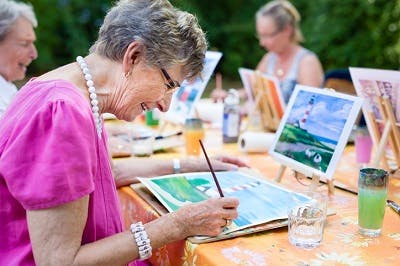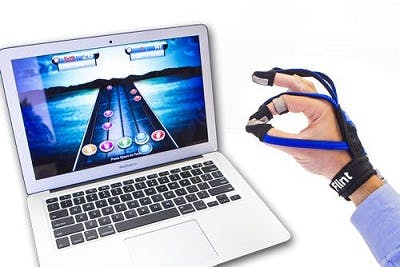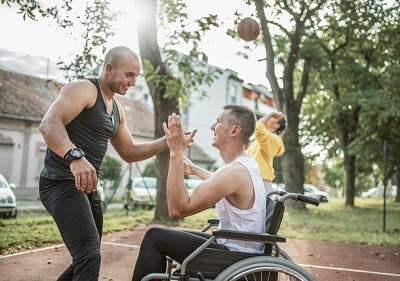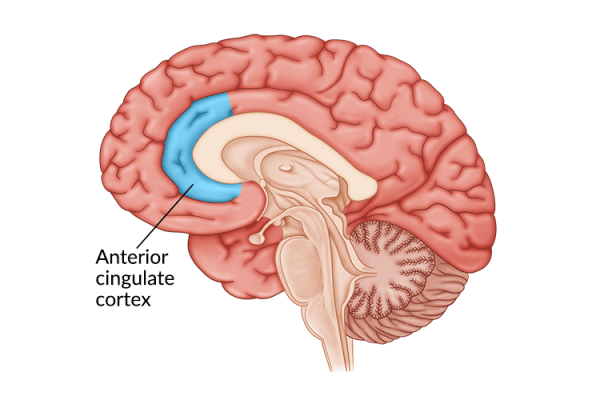Recreational therapy consists of many different activities that survivors can partake in, depending on their ability level. Not only are these activities for brain injury patients fun and engaging, but they also provide the extra benefit of stimulating the brain and restoring function.
After a traumatic brain injury (TBI), survivors may decrease participation in leisure activities due to limited abilities. Often, this isn’t intentional, and many survivors want to get back to the activities that they love. Fortunately, there are many fun activities for brain injury patients that can help boost recovery.
This article will discuss some of the best activities for brain injury patients and how each activity can help promote recovery and increase independence.
Benefits of Recreational Activities After Brain Injury
One of the most engaging ways to stimulate the brain is through recreational therapy. Stimulating the brain helps promote neuroplasticity which is the brain’s ability to rewire itself and recover.
When the brain is challenged by engaging activities, the brain’s neural pathways are strengthened. The more the neural pathways are strengthened, the more functions may be regained.
Recreational therapy encompasses a range of recreational or leisure activities that can develop a person’s community engagement, strength, desire to exercise, or sports-specific adaptations. This can help survivors strengthen motor skills, improve cognitive function, and enhance social dynamics.
There are a variety of activities survivors can choose from but it’s important not to try something too difficult if your abilities are not there yet. Your therapist can make a proper assessment of your current ability level and help you choose the most suitable activities.
The goal is to find engaging activities to maximize skill development and restore independence after brain injury.
Therapeutic Activities for Brain Injury Patients
Recreational therapy offers survivors the chance to participate in meaningful, brain-stimulating activities they can enjoy.
However, it can help to start with simple activities to practice motor and cognitive skills. Although they may seem simple, the same benefits can be gained through these activities for brain injury patients.
Here are some examples of fun activities for brain injury patients:
1. Puzzles and Board Games
Puzzles and board games are great ways to practice cognitive skills and have fun. Board games are usually played as a group activity which adds a social dynamic for more cognitive stimulation. Some examples include Chess, Sudoku, Scrabble, and Uno. Puzzles are another fun activity that can help challenge your memory, strategy, and problem solving skills. They can be done solo or with friends!
2. Video Games
Video games are another fun way to improve cognitive skills because video games engage different parts of the brain. Studies have also shown that video games help improve decision making, problem-solving, and information processing. There are multiple types of games to choose from like virtual reality and Wii sports.
3. FitMi
If you want an activity that combines the fun of video games with an evidence-based approach to recovery, consider gamified neurorehabilitation devices like FitMi.
FitMi is an interactive home therapy device designed to help improve function in the whole body after brain injury. It prescribes physical therapy exercises that target different muscle groups and unlocks harder exercises as you improve. This is an excellent activity for brain injury survivors because FitMi adjusts to your ability level and can continuously challenge you even as you improve.
Instead of waiting for insurance to cover therapy sessions, FitMi allows you to practice therapy exercises throughout the day as many times as you’d like. It’s a great activity for brain injury survivors that want to stay motivated and boost recovery.

4. Painting
Sparking creativity can be another great way to stimulate the brain and encourage recovery after brain injury. Engaging in painting or other forms of art therapy can help strengthen concentration and other cognitive abilities. It can also help improve memory, visuospatial abilities, problem-solving, and fine motor skills.
Painting can also provide a healthy outlet to process negative or unwanted feelings. This can be helpful for brain injury survivors struggling with depression, anxiety, or other emotional changes after TBI.
5. Dancing
Dancing can help improve motor skills like full-body coordination and balance, making it a worthwhile recreational activity for brain injury survivors. It combines the benefits of aerobic exercise with the cognitive and emotional benefits of music therapy.
This activity is also accessible, because anyone can make a dance move! Just moving something to rhythm is dance even when your mobility is limited. Allow yourself to feel the music and move however you can.
6. Animal Interactions
If you are an animal lover you may enjoy spending time with a service dog. Service dogs are trained to assist brain injury survivors with limited physical abilities by providing balance support and assisting with daily activities. Along with physical support, service dogs can offer emotional support to patients struggling with stress, anxiety, or depression.
7. Creative Writing
Creative writing is another fun activity that can stimulate your brain and spark creativity. Writing engages several areas of the brain and helps increase memory and retention.
You can start by keeping a journal and writing down dreams, ideas, goals, or create short stories. Another form of journaling is sitting outside and writing your observations which can also help improve attention.
Although writing is a great activity for brain injury patients to engage in, it can be challenging if your motor skills are still improving. However, you can try storytelling or reading out loud, which are just as creative. Reading out loud in particular challenges your listening and reading comprehension skills. It’s also an activity that can be done with family or friends.
Brain-Stimulating Activities for Brain Injury Patients
If you have regained significant function during your recovery from brain injury, there are more advanced recreational activities you can try. Still be sure to consult with an occupational therapist before participating in any new activities.
Here are some challenging and therapeutic activities for brain injury patients:
8. Knitting
Knitting is a great activity to improve fine motor skills and overall hand function. It can also provide a sense of control that may have been lost after brain injury and allows you to undo mistakes. It’s also an ideal activity for survivors struggling with attention because it requires a certain level of focus. You may also discover the joy of your accomplishment is very satisfying.
9. Music Therapy
Music therapy is a popular modality that has been clinically proven to stimulate the brain and promote healing. Music can help brain injury survivors improve a wide variety of skills such as language, cognitive, and even motor functions.
To reap the benefits of listening to music, it helps to be as engaged as possible. This can include singing, playing an instrument, moving to the beat/rhythm, or simply concentrating on the music. However you choose to engage in music, don’t forget to have fun!

10. MusicGlove
To harness the power of music therapy and apply it to motor recovery, look for activities that combine both.
For example, MusicGlove is a hand therapy device that has been clinically proven to help improve hand function within just 2 weeks of regular use. It works by motivating users to make various hand therapy movements in sync with a musical game.
Because it combines elements of both music and gaming, MusicGlove is one of the most fun and effective activities for brain injury patients. Some survivors forget they are doing therapy because they become so immersed in the experience. This is the easiest way to get many repetitions of movements and therefore improve your abilities.
11. Aquatic Therapy
Aquatic therapy is another popular activity for brain injury survivors. It involves performing exercises in a heated pool alongside a trained therapist.
Water helps reduce body weight by nearly 90 percent allowing for easier movement. This can be great fun for survivors that struggle with muscle weakness after brain injury, and it also helps promote motor recovery.
Additionally, water has a higher viscosity than air does and creates more resistance to movement. This resistance is built in training to increase muscle strength and endurance.
12. Gardening
One fun outdoor activity that can be done as a group or on your own is gardening. Studies have shown that gardening helps improve overall health including cognitive function. It has also helped reduce stress, anxiety, and mood disturbances that survivors may often experience after brain injury. You may have heard the phrase “nature is healing” and in this case it’s true. This activity is a great way to engage with nature while also stimulating the brain.
13. Community and Cultural Outings
Recent studies have found that community engagement is an essential part of recovery after brain injury. When the brain is exposed to a new environment it stimulates neuroplasticity to adapt to that environment; and neuroplasticity is the essence of recovery.
Community outings can also yield positive outcomes in productivity and improved social interactions. There are various types of social and cultural activities for brain injury patients, and your occupational therapist is a great resource for recommendations.
14. Cooking
After a TBI, the brain requires more food and energy to sustain itself. A fun way to ensure you are maintaining a good diet is by engaging in cooking.
Cooking is an activity that involves a multiple-step process which can often be difficult after a brain injury, but luckily there are recipe books specifically for brain injury survivors in which you can partake in. Along with ensuring an adequate diet, cooking can help improve your memory, executive functions (complex cognitive skills), and boost energy.

15. Adaptive Sports
When you feel ready to engage in complex activities, ask your therapist if it’s safe to try adaptive sports like tennis and wheelchair basketball. These are popular activities that can improve social and gross motor skills.
Complex activities such as baseball, bowling, and cycling are usually done as a group which can also help improve any feelings of social isolation that may occur after brain injury. Social isolation may interfere with recovery and therefore it’s important to find a community in which you feel comfortable and welcomed.
Staying Motivated with Activities for Brain Injury Patients
Engaging in brain-stimulating activities after brain injury can help promote neuroplasticity which is essential for recovery. Recreational therapy offers a variety of activities for brain injury patients to choose from, from knitting to painting or dancing.
Participating in leisure activities after a brain injury may feel intimidating, but don’t limit yourself because nearly all activities can be adapted to specific limitations. Try to find something that you most enjoy first and then ask for help on ways it can be adapted to you as needed. Occupational therapists and recreational therapists can also help ensure the activities you choose are suitable and effective for improving your functioning.
We hope this article inspires you to engage in fun activities so that you can promote recovery while enjoying your leisure time!









